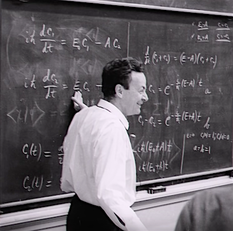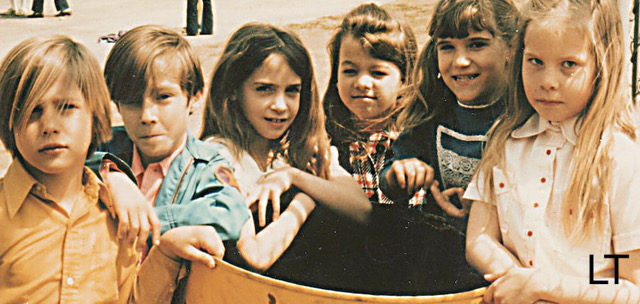Science doesn't prove things right.
It is a method that eliminates wrong ideas.
Correlation should not imply causation.
It is a method that eliminates wrong ideas.
Correlation should not imply causation.
Sense Gravity!
"Scientists think that the force of gravity may be carried by a particle called a graviton. The existence of gravitons has not yet been confirmed experimentally." We may never find a graviton.
Scientists believe electrons and quarks exist even though they have never seen them.
Note. This page replaces the Science page on ThinkAlgebra.org.
Einstein based his theories of relativity on two assumptions: "It’s impossible to exceed the speed of light; it’s impossible to tell the difference between gravity and acceleration." (Quote: QuantaMagazine, 2021) If either of these assertions were not true, the laws of physics would be rewritten. Physics is the most fundamental science, yet it is downplayed in the NextGen science standards.
John Horgan ("The Paradox of Karl Popper," Scientific American) writes, The lesson of quantum mechanics and even of classical physics, Popper said, is that nothing is determined, nothing is certain, nothing is completely predictable; there are only “propensities” for certain things to occur." "We don't teach this idea in our science classes.
What about Charles Darwin's theory of evolution?
Suddenly Popper pounded the table and exclaimed, “one ought to look for alternative theories!”
Elementary school students often lack proper science education. Math is lacking in elementary school science. For example, K-5 students are not taught atomic structure and energy levels, the relationship between magnetism and electricity, forces and motion (Newton), speed and velocity, weight and mass, and calculations for average speed and acceleration. Also, they seldom learn the difference between physical and chemical changes. And the list goes on and on. These are important concepts in physics but are often ignored. Why is that?
Today, we are told that the best way to learn science is hands-on, but I'm afraid I have to disagree. As we used to call them, hands-on or labs should be directly related to the science the student is studying in class. The problem is that often they are not. If the students were studying and exploring Newton's 3rd Law in class, then I think the hands-on activity of rockets would not only be fitting but fun as well. Thus hands-on activities should be an extension of, and reinforcement of the content learned in class, which includes reading the textbook and paying attention in class when the laws are discussed, examined, and applied by a teacher who uses explicit instruction. In short, hands-on activities should not be a substitute for learning scientific knowledge. Hands-on activities should promote the scientific content the student is currently studying.
Often, the same set of observations or measurements can be interpreted in several different ways. Thus, inferences or conclusions may vary considerably. It is also the reason that scientific theories are not set in stone. New observations can fine-tune or change a theory. Science is not perfect, but math is.
Most kids are not proficient in science (NAEP).
For example, only 22% of 12th-grade students are proficient or above in science, and only 2% are at the Advanced Level. Most kids are not skilled in science, to me, means that most students know very little content, which is the crux of the problem. In my view, the new science Framework (NextGen) from the National Research Council (July 19, 2011) downplays content knowledge. The framework aligns well with hands-on inquiry methods. In short, kids are not required to learn a lot of science content. The background knowledge is essential but skipped.
Note. Reformers assert that the best way (or the only way) for young children to learn science is through hands-on, discovery, or inquiry methods. It is nonsense.
Furthermore, students lack the background knowledge and the math needed to do the science, so it follows that they would have difficulty explaining the experiments' results. I cannot overemphasize the importance of knowledge in science. The stress in science education has shifted to mostly process, but process fizzles out fast without learning adequate content. I am not a fan of programs that do not focus on content knowledge. Thinking without content knowledge is empty.
Read Science to Learn Science
Children need more than hands-on stuff; they need to read science to learn science from good textbooks. Experiments should be done to reinforce the content students are currently learning. Also, students need to learn science vocabulary.
 |
| 7th-grade student reading her physical science textbook. |
Kids need to do more than observing single-celled paramecium swimming around under the microscope. It's intriguing, but they should also learn background knowledge such as the cell theory, the structural differences between plant and animal cells, the organelles in cells, and what each does. Also, the nucleus and the code for genetic information (DNA), mitochondria, chloroplasts, cellular transport (diffusion/osmosis), glucose to ATP, photosynthesis, amino acids and proteins, enzymes, cell division (mitosis), and so on. Lastly, lab work (hands-on science activities in small groups) should reinforce the topics students are currently studying.
I cannot overemphasize the importance of learning content knowledge in science. The stress in science education has shifted to mostly process, but process fizzles out fast without learning adequate content.
So-called experts argue that hands-on inquiry group work should be the primary method of learning science. The new science standards stress process over content knowledge. But, this method is inefficient and backward. Students would learn much more science by reading science textbooks and listening to presentations (explanations) given by knowledgeable teachers in class. The hands-on inquiry labs should reinforce the content, not replace it.
Click: The New (NextGen) Science Framework
Even though I wrote this a few years ago, it demonstrates that the new science standards' primary focus is the processes, not content knowledge. I see the same trend in math and reading: process over content. It's backward.
Note. Students don't read books anymore. They should!
Note. Students don't read books anymore. They should!
Many people think that if you make a bunch of observations, you make up a rule, idea, or theory, but that's not how real science works. If you are an expert in a field, you guess a rule (Feynman), then carefully craft an experiment to make observations (measurements) to test it. Also, experiments should be replicated by other scientists and peer-reviewed. Intrinsically, real science eventually weeds out bad ideas. On the other hand, research in education doesn't do that. Usually, there is no repeatability. Finding a control group is next to impossible. Consequently, many unsupported ideas, practices, or theories in education still thrive today.
 |
| Feynman at Caltech - "You don't know anything until you have practiced." |
"In education, you increase differences."
Richard P. Feynman was invited to a conference to discuss "the ethics of equality in education." He confronted the experts by asking this question. "In education, you increase differences. If someone's good at something, you try to develop his ability, which results in differences or inequalities. So if education increases inequality, is this ethical?" (Surely You're Joking, Mr. Feynman! by Richard P. Feynman, Nobel Prize in Physics)
"You don't know anything until you have practiced." (Feynman)
 |
| Atoms and molecules exist, move, and bounce off each other. (Einstein, 1905) |
Photo Caption: How can one drop of green food coloring make the water uniformly green? Einstein: Atoms exist, move, and collide!
Be Skeptical!
Richard Feynman exhorted citizens to be skeptical of claims and only believe what could be tested.
Many studies show associations (i.e., correlations), but a correlation is not causation or fact. Guy P. Harrison (Think) writes, "The brutal truth is that human brains do a poor job of separating truth from fiction. It leads to many false beliefs. Think like a scientist. Proof comes before belief." Sometimes, what some scientists say and what science shows is not the same.
© 2018-2019, 2020 LT/ThinkAlgebra.org
Model Credit: GabbyB, Katherine, HannahE, CalTech
Major Changes: 7-13-19, 7-16-19, 7-19-19, 7-27-19, 11-21-19, 11-22-19, 12-23-19, 11-4-2020
Major Changes: 7-13-19, 7-16-19, 7-19-19, 7-27-19, 11-21-19, 11-22-19, 12-23-19, 11-4-2020






